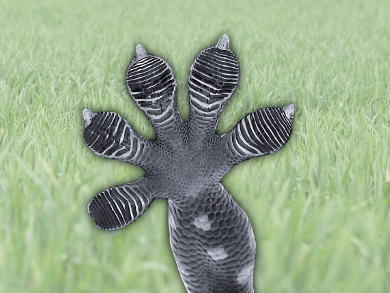Some lizards and insects climb smooth vertical surfaces using fiber-covered appendages. Synthetic fibrillar surfaces match or surpass the performance of their biological counterparts. However, finding a simple, economical process that can fine-tune adhesion behavior remains challenging.
Coating elastomer films with grass-like micro- and nanocrystals of diarylethene (DAE) photochromic molecules creates “lawns”. Their frictional behavior can be tuned reversibly by alternating between UV irradiation and dark storage. Gabriele Nanni, Istituto Italiano di Tecnologia, Genova, Italy, and colleagues attribute this behavior to a change in Young’s modulus caused by photoisomerization of the DAE molecules. The Young’s modulus is a measure of the stiffness of an elastic material.
The team observed that a steel tip sliding across the DAE surface experienced a gradual increase in friction with increasing irradiation time. UV irradiation reduced stiffness in the outer parts of the fibrils by 20 %, a change that is correlated with a transition from a crystalline to an amorphous state. The thickness of the amorphous layer increases with UV exposure time. Storing the fibrils in the dark for 24 hours restores their original frictional properties and stiffness.
- Tunable Friction Behavior of Photochromic Fibrillar Surfaces,
Gabriele Nanni, Luca Ceseracciu, Reinier Oropesa-Nuñez, Claudio Canale, Princia Salvatore, Despina Fragouli, Athanassia Athanassiou,
Langmuir 2015.
DOI: 10.1021/acs.langmuir.5b01004



